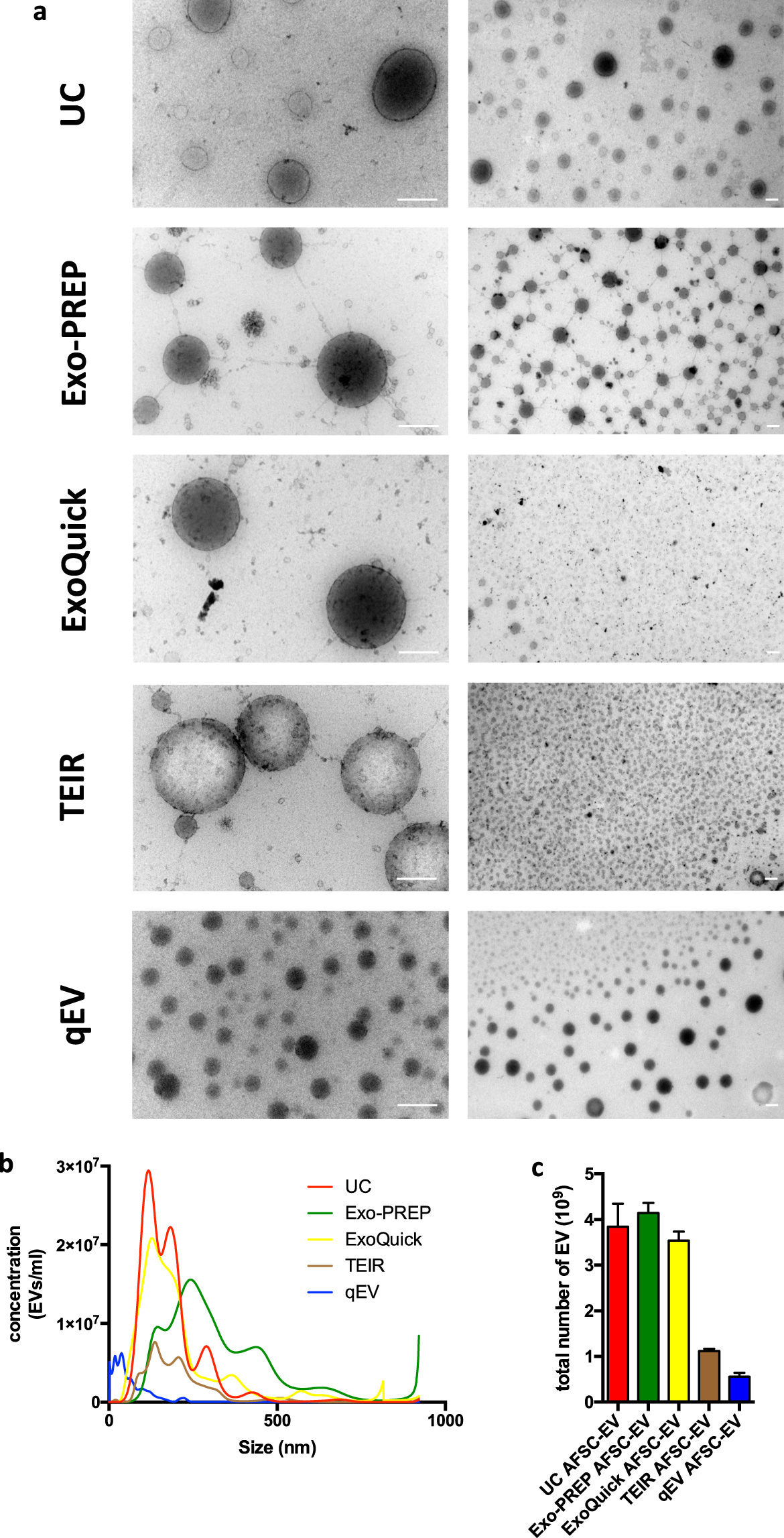Tiny Helpers from Within: How Amniotic Fluid Cells Are Revolutionizing Healing
The role of exosomes derived from amniotic fluid stem cells in advancing regenerative medicine.
The Power of Healing in a Drop
Imagine your body has its own repair kit, a special set of tools designed to fix damage from injuries or diseases. Now, scientists have discovered something amazing in amniotic fluid, the protective liquid surrounding unborn babies. This fluid contains special particles called stem cell exosomesoffering new hopes for healing.
Exploring the Healing Potential of Amniotic Fluid Exosomes
Amniotic fluid is not just there to cushion the unborn baby; it's packed with stem cells that have incredible abilities. These cells can turn into different types of tissue, which means they could help repair everything from heart muscles to brain cells. But the real game-changer might be something even smaller that these cells release: exosomes.
Exosomes: The Healing Messengers
Exosomes are tiny packets filled with healing messages, sent from stem cells to injured or diseased parts of the body. They're like mini-postmen delivering recovery instructions. What makes them special is they can carry these messages without being stopped or getting lost, ensuring the right signals reach the damaged areas to start the repair work.
A New Approach to Healing
The study we're discussing explored how these exosomes from amniotic fluid stem cells could help in healing lung tissue. This is especially important because lungs are often tricky to heal, given their constant exposure to the air and pollutants. The findings suggest that these tiny particles can significantly reduce cell death and promote recovery, acting as a powerful tool for regenerative medicine.
Harvesting Healing: The Process of Isolating Exosomes
Scientists have discovered a groundbreaking way to harness the power of healing from within amniotic fluid. By carefully cultivating stem cells found in amniotic fluid, researchers can encourage these cells to produce exosomes. These exosomes are then meticulously collected from the culture medium, where they float freely, separated from other cellular materials through a precise process of filtration and centrifugation. This isolation technique ensures that what we get is a pure and potent concentration of healing exosomes, ready to be studied and potentially used to revolutionize how we treat injuries and diseases.

Why It Matters
This discovery could mean a lot for treating diseases that currently have limited options, like certain lung conditions, heart diseases, and even neurological disorders. By harnessing the power of these exosomes, doctors might one day be able to offer more effective treatments without the need for invasive surgery or long-term medication.
The Magic of Dose
One of the key findings from this research is that the number of exosomes plays a critical role. Just like too little medicine might not be effective, and too much could be harmful, finding the right dose of exosomes is crucial for their success in healing. This study showed that increasing the number of exosomes could enhance their protective effects, marking an important step in understanding how to use them therapeutically.
Diverse Messengers: Understanding the Variety of Exosomes
It's crucial to understand that not all exosomes are alike. These microscopic packages, while all serving as carriers of information between cells, vary significantly in their contents and effects based on their cell of origin. Just like letters can contain different messages, exosomes from different types of cells carry diverse proteins, RNAs, and other molecules. This variation means that the therapeutic potential of exosomes can be highly specific, offering targeted approaches to treatment. Researchers are delving into the complexities of exosome diversity to unlock tailored solutions for a range of medical challenges, emphasizing the importance of matching the right type of exosome with the right therapeutic need.
From Lab to Life
While the idea of using amniotic fluid exosomes for healing is still in the early stages, the potential is enormous. Scientists are now looking at how these findings can be translated into real-world treatments. There are challenges ahead, such as figuring out the best way to deliver these exosomes to the injured tissues, but the path forward looks promising.
A Future of Healing
Imagine a future where healing from a severe injury or disease could be as simple as receiving an injection of these miraculous particles from amniotic fluid. It's a future where regenerative medicine could offer new hope to millions of people worldwide, providing a natural and effective way to heal the body from within.
Reference:
Antounians, L., Tzanetakis, A., Pellerito, O. et al. The Regenerative Potential of Amniotic Fluid Stem Cell Extracellular Vesicles: Lessons Learned by Comparing Different Isolation Techniques. Sci Rep 9, 1837 (2019). https://doi.org/10.1038/s41598-018-38320-w
Lötvall, J. et al. Minimal experimental requirements for definition of extracellular vesicles and their functions: a position statement from the International Society for Extracellular Vesicles. J Extracell Vesicles. 3, 26913 (2014).
Witwer, K. W. et al. Standardization of sample collection, isolation and analysis methods in extracellular vesicle research. J Extracell Vesicles. 2 (2013).
Ratajczak, J. et al. Embryonic stem cell-derived microvesicles reprogram hematopoietic progenitors: evidence for horizontal transfer of mRNA and protein delivery. Leukemia. 20, 847–856 (2006).
Simons, M. & Raposo, G. Exosomes–vesicular carriers for intercellular communication. Curr Opin Cell Biol. 21, 575–581 (2009).
De Coppi, P. et al. Isolation of amniotic stem cell lines with potential for therapy. Nat Biotechnol. 25, 100–106 (2007).



